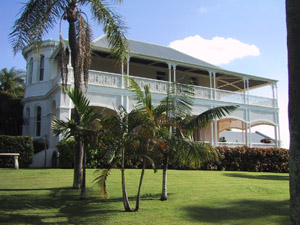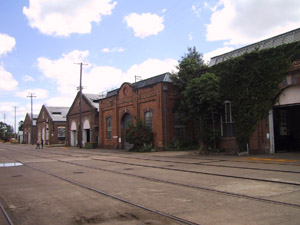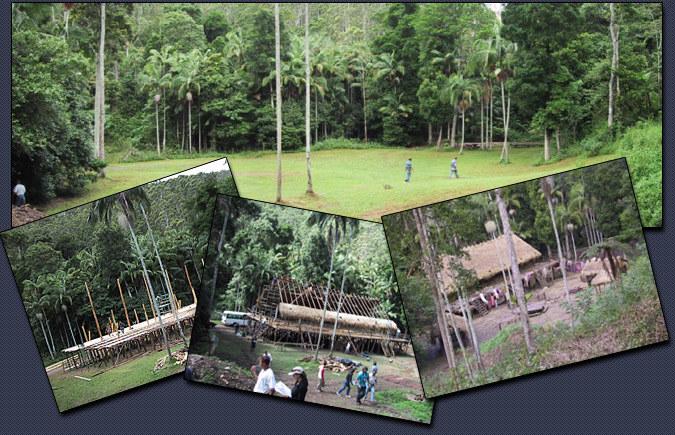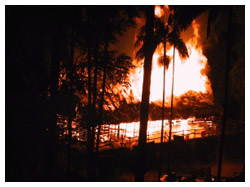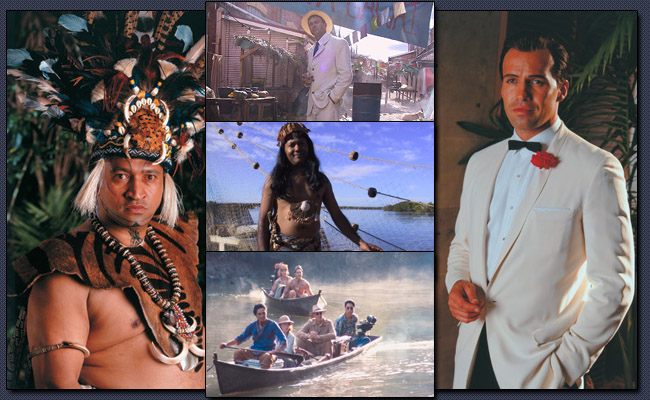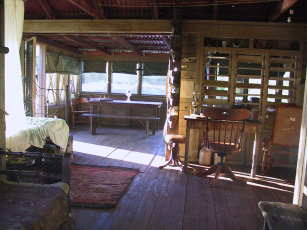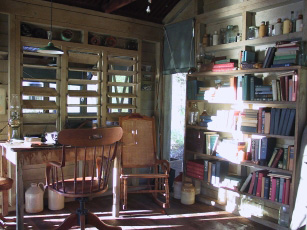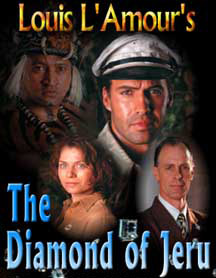 |
||||||||||||||||||||||||
|
|
||||||||||||||||||||||||
We completed all the legal paperwork by early December, a time when the entire film business starts to shut down for the holidays. Mike had arranged to bring me on as a producer (an offer so generous it still astounds me) but the more I looked over the story the more I realized that I wanted to write the screenplay also. That was vastly easier said than done, however. Studios and networks are very particular about who they hire as writers, usually choosing them from a extremely exclusive list. As a producer you would hope that the reason the list is short is because it only contains writers who are very good but my experience is that this is not always the case ... it's often difficult to figure why a certain name is chosen at all other than they are somebody's nearly random 'flavor of the month.' Though I had scripts to show off my writing and I'd been hired a few times in the past (on films that ultimately did not get produced) I knew it was very unlikely that I could submit myself and actually be hired to write the screenplay for this film. If I was going to try this I'd have to write an entire script on spec and then hope for divine intervention too!
I started writing. One of the reasons that I wanted to work on the script was that I realized that there were many things I wished I'd changed in the novella but had not because of the rules I'd set up for myself about deviating from my Dad's work and the lack of time I'd had to work on it. I wanted to create a much more complete picture of life in Marudi, the little river port where the story starts. I wanted to portray more of the life of Borneo natives, dealing with them in a more complex manner than just Raj, Mike Kardec's friend and Jeru, the villain. And I wanted to deal with John and Helen Lacklan in a close and personal way, not just as characters only seen through Kardec's eyes. All these aspects helped bulk up the story to proportions that would make it a feature length film. At the time we were just starting post production on the audio play of Son of a Wanted Man so often I was writing out rough drafts of scenes in the editing room then polishing them late at night after we were done cutting. Over the holidays I traveled to Colorado, writing ideas on a clipboard as I drove then stopping occasionally to type up the various scenes. I wrote on the road, in our cabin, and also in a hotel room in Santa Fe, creating an adventure in the tropical rain forest while surrounded by snow. Returning to Los Angeles in time to do yet another draft in before the network resumed work for the new year. My gamble paid off ... in reality it was the only way they were going to get done before the dates the unions had set for potential strikes. They bought the script and I was on as both writer and producer. That's not nearly as impressive as the positions sound, when the bosses at the network say 'frog' you still have to jump, doing exactly what they say when they say it ... a lesson I've never been good at but was about to learn over and over. Within days there were notes for revisions some of which I found helpful and some that, like most screenwriters, drove me crazy. It didn't matter, we were off and running.
We debated where to shoot the film, seriously considering shooting in Borneo until one morning an executive tossed a copy of the LA Times on the desk that displayed a headline that read something like, Headless Corpses found in Borneo River. "You are not going to Borneo," she told us.
The next few weeks were a whirlwind of rewrites, location scouting, and local casting. The Australian immigration authorities would only grant five or six people from the US work permits for the film so everyone else in the cast and on the crew was going to be from Australia or New Zealand.
Many locations fell into line very quickly. After looking at a wonderful Victorian in central Brisbane, we settled on the old Queensland parliament building as our location for the District Officer's Residence. An old factory for railroad engines and cars near Ipswitch became our warehouse and Marudi marketplace location. Though we found a couple of adequate bungalows we decided to build Kardec's place at a reservoir near our offices because it had a wonderful rock formation in the background and on a local ranch we found the perfect place to build (and burn) Jeru's long house.
All this plus hundreds of hand-made costumes and custom made canoes were possible because the exchange rate was very much in favor of the American Dollar ... we just about doubled our money by shooting in Australia! Where we weren't so lucky was in finding all the required locations close enough to our hotels and offices. There were 1950s vintage oil fields in southern Queensland and large, beautiful, caves. Unfortunately, these were too far away to be useful ... the hours needed to transport the entire film company to these places put them beyond our reach.
Large rivers were also a problem. We scouted in the Cairns and Port Douglas area of northern Queensland and found some wonderful places but, again, the trip up there to shoot turned out to be too expensive. Finally we discovered a spot that would solve some of our problems, an estuary not very far from the ocean. The other issues were solved with some last minute rewrites replacing a scene we had planned where Kardec wrecks his canoe while shooting some rapids. One of the wonderful aspects of making the film was the way that the whole world of The Diamond of Jeru and 1950s Sarawak came to life. Locations that I had half imagined and props and costumes that I had never imagined all took on a sense of reality, if only for the few days that we were working on a certain set or location.
I could sit quietly in Kardec's bungalow (after the construction crew had gone home) walk the streets of Marudi (in the old railroad factory) or sit on the back veranda of the District Officer's Residence (the old parliament building now surrounded the campus of the Queensland University of Technology). I was introduced to various items like the Seagull outboard motor that was a mainstay of the British Empire ... sort of a sea, lake, and river-going Land Rover ... Arnott's Biscuits and Neptune Soda, Australian food products of greater or lesser repute, and Bi-Aladdin Lamps, the down-under version of a Coleman. All of these things were experiences and items that detailed the time and the place in a way that was only now coming alive in my mind.
All movie productions are full of wonders and disasters and The Diamond of Jeru was no exception. We did more on the budget we had than I had ever thought possible yet there were many times what had seemed easy either back in LA or on paper became impossible. There were times when I was furious and then times when I was so thankful and amazed at what we were doing it nearly broke my heart. I was getting a chance to work in a foreign country, that in itself was amazing. I lived in an apartment a block from the beach in a place called Surfer's Paradise (straight out of a Jimmy Buffett song), I got a chance to work with over a hundred Australians and New Zealanders (a vastly different and better experience than being a tourist), and I had a wonderful chance, once the film was done to travel for a few weeks using the up mounds of per diem money I had saved.
|
||||||||||||
|
The
History and Making of Son of a Wanted Man Photo
Galleries Audio
Sound Bytes About
|



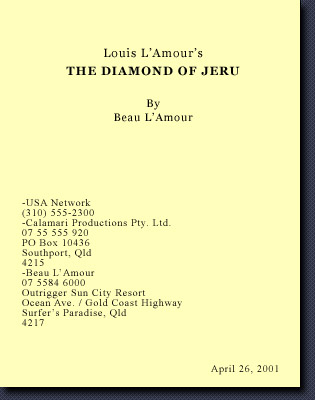 Though not divine intervention there were two things in my favor. One was that no one was going to be seriously looking for a writer until they came back to work in the second week of January. The other was that there were contract negotiations scheduled with both the Hollywood writer's and screen actor's guilds that spring ... all work would need to be wrapped up prior to a potential strike if the negotiations failed. That meant that the network would want to get into production as quickly as possible in order to not be effected by any potential strikes.
Though not divine intervention there were two things in my favor. One was that no one was going to be seriously looking for a writer until they came back to work in the second week of January. The other was that there were contract negotiations scheduled with both the Hollywood writer's and screen actor's guilds that spring ... all work would need to be wrapped up prior to a potential strike if the negotiations failed. That meant that the network would want to get into production as quickly as possible in order to not be effected by any potential strikes. 
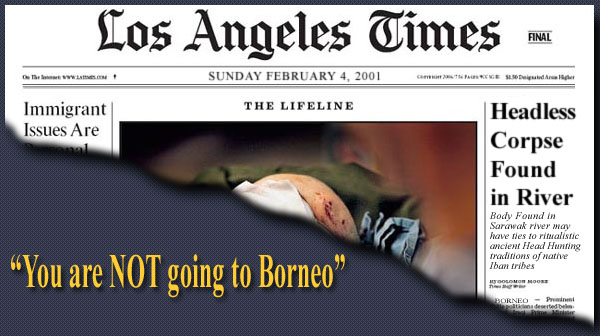
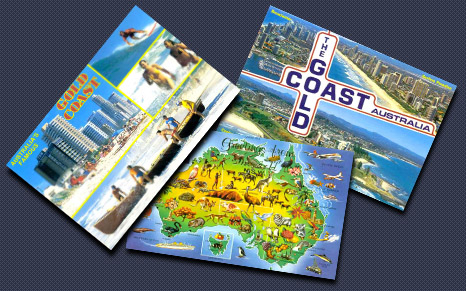 The next choice was Australia, where the Queensland coast had both some film infrastructure and the appropriate rainforest. Within a very few days Mike was off to open our offices and start hiring a crew and I was working on the vast number of changes that I had been told to make in the script. Days later, I too was on a plane for Sydney.
The next choice was Australia, where the Queensland coast had both some film infrastructure and the appropriate rainforest. Within a very few days Mike was off to open our offices and start hiring a crew and I was working on the vast number of changes that I had been told to make in the script. Days later, I too was on a plane for Sydney.